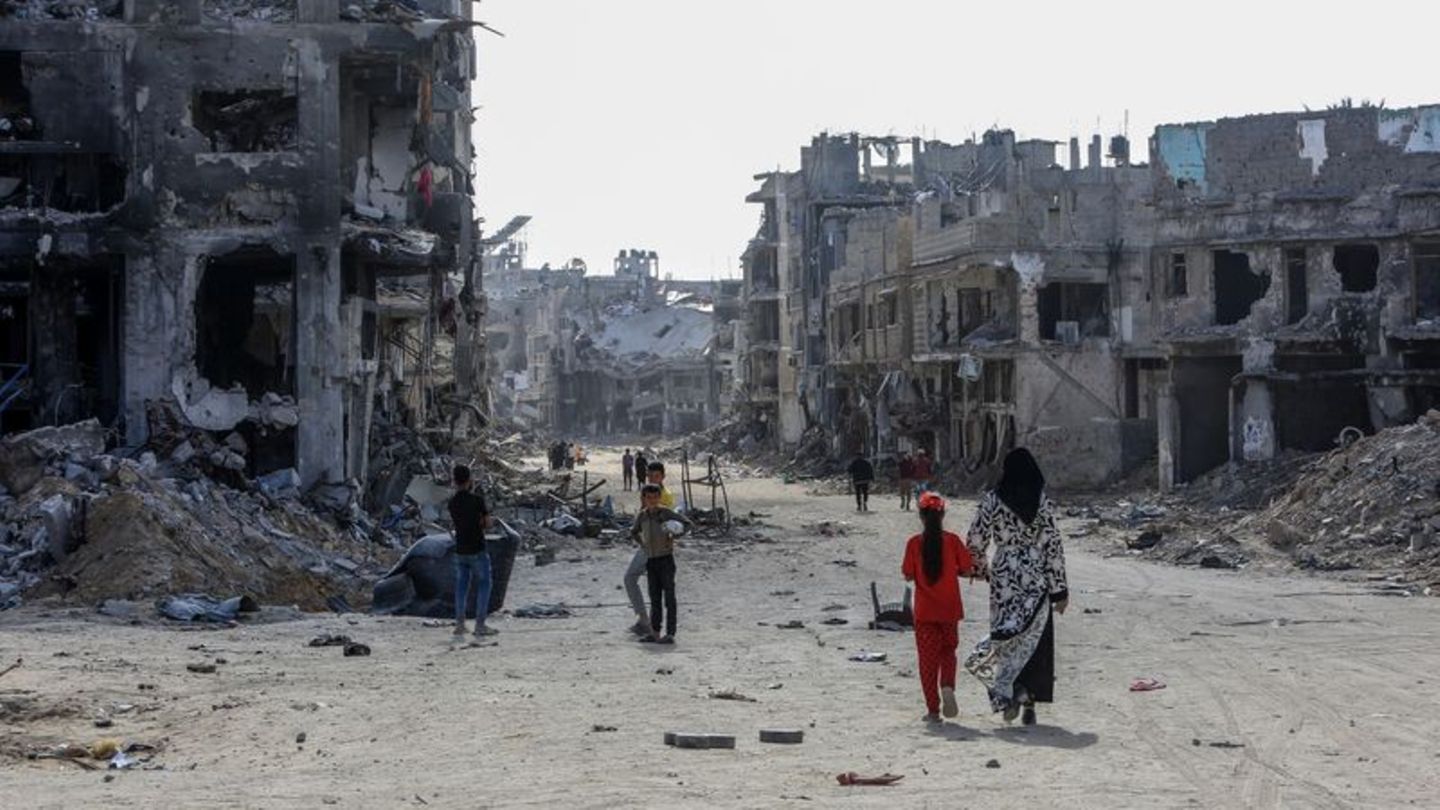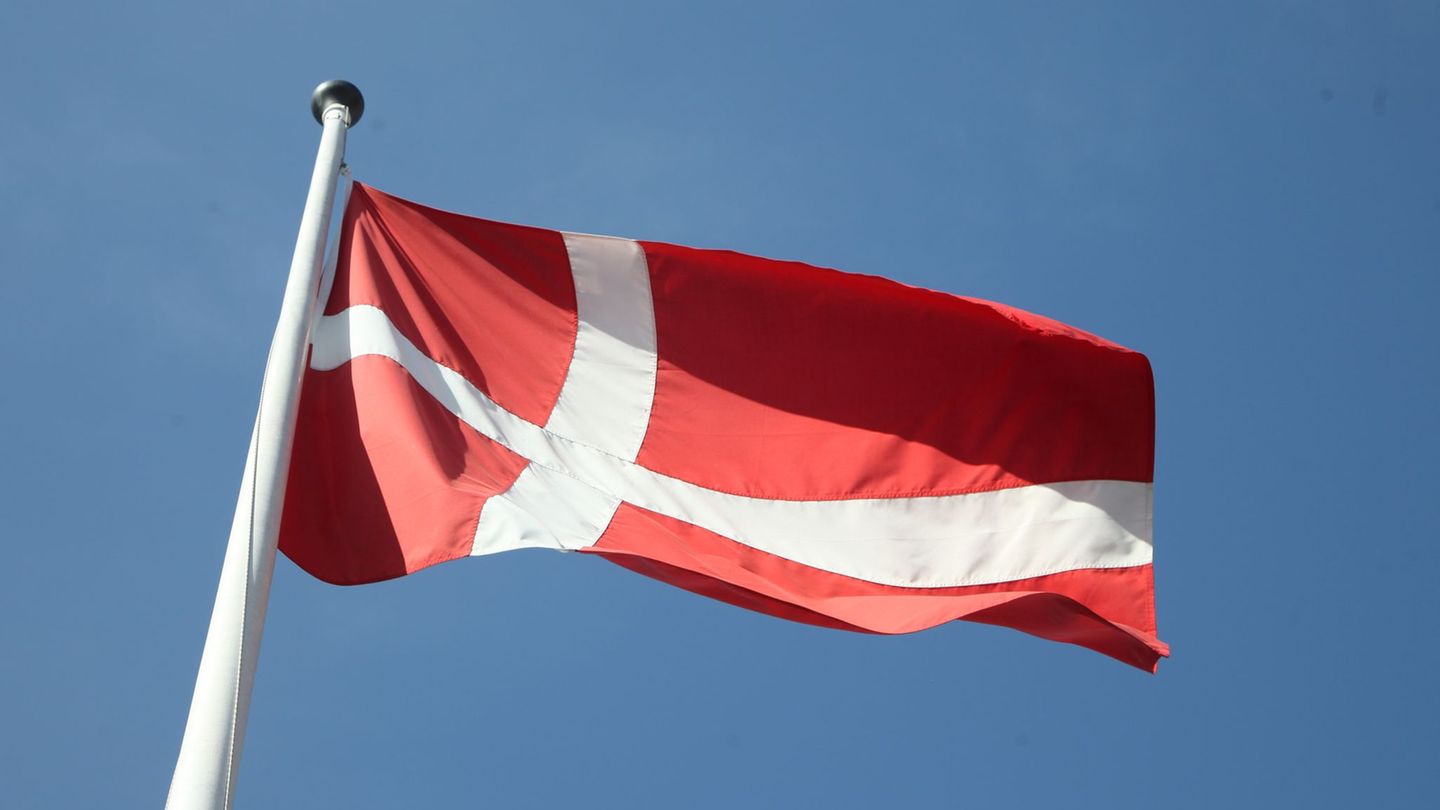According to organizations, many parts of the Gaza Strip are no longer habitable after more than six months of war. Rafah could also resemble a field of rubble after a possible Israeli offensive.
Abla Faraj Allah spent many hours searching for mementos among the rubble of her home in the Gaza Strip. “I managed to find some pictures and souvenirs that weren’t burned,” the Palestinian told the German Press Agency.
She says her house in the refugee district of Nuseirat was destroyed in an Israeli airstrike two weeks ago. Your information cannot be verified. Everything was destroyed except for the souvenirs, some items of clothing and a closet. Abla Faraj Allah asserts that her house in the center of the contested coastal area was not used for military purposes. She herself is a civilian. “I don’t know why my house was bombed.”
Fearing this scenario, she had already moved into a tent on the nearby beach with her relatives. After the Israeli army left their neighborhood following an operation, the family returned – and were shocked by the extent of the destruction. They lost almost everything, and the security of living in a real building was also taken away from them.
After more than six months of war, large parts of the Gaza Strip are no longer recognizable. According to experts, reconstruction could take decades. According to reports, some people find it difficult to find their former homes again given the great destruction. According to aid organizations, the densely populated Gaza Strip has become partly uninhabitable due to the widespread destruction. Israel repeatedly emphasizes that it does not attack civilian targets – only those used by armed people.
Tens of thousands of buildings destroyed
According to the Decentralized Damage Mapping Group (DDMG), more than half of all buildings in the Gaza Strip have been damaged or destroyed since the war began in October. US scientists from the DDMG are examining the war damage using satellite data. The UN announced a month ago that around a third of all buildings had been destroyed or damaged since the start of the war.
By the end of February, more than 31,000 buildings had been destroyed, according to the UN Satellite Center (Unosat). In addition, another 17,000 buildings were severely damaged and almost 41,000 were slightly damaged. Together, 35 percent of all buildings or 121,400 residential units are affected. When analyzing, Unosat refers to satellite images from February 29, 2024. These were compared with older images.
According to its own statements, Israel’s army only destroys the infrastructure of extremist groups; civilian facilities are not targets. However, terrorists from Hamas and other extremist Palestinian groups intentionally used residential buildings, clinics, schools and mosques for their own purposes, the military said. Israel assumes that Hamas is consciously taking into account the destruction and many dead civilians in order to achieve international sympathy for itself and at the same time criticism of Israel.
“Can’t handle this level of destruction”
“We have become homeless without a future,” says Salah Kadih from the city of Chan Yunis in the south of the Gaza Strip to the dpa. “We cannot handle this level of destruction.” The area with the gray piles of rubble and skeletons of houses looks as if a devastating earthquake had occurred, says the father of five children. The city of Khan Yunis is considered a stronghold of the Islamist Hamas.
There is not much left of the two-story house in which his family lived after the Israeli army deployed in the city. “They destroyed everything here. They destroyed our houses, our lives, our dreams,” says the 42-year-old in tears. His information could not be independently verified either.
In view of the high number of civilian casualties, the destruction and the catastrophic humanitarian situation in the Gaza Strip, Israel is increasingly being criticized internationally. The Gaza war was triggered by the terrorist attack by Hamas and other extremists in southern Israel on October 7th. They killed 1,200 people and took 250 more hostage to the Gaza Strip. Israel then attacked the coastal area to crush Hamas.
Observers warn that after a possible Israeli offensive in Rafah, this place could also resemble a field of rubble. The city near the Egyptian border is still comparatively intact. Israel’s allies are urgently warning against a large-scale operation in the city, which is crowded with hundreds of thousands of Palestinian internally displaced people. However, Israel believes an operation in Rafah is necessary to destroy the remaining battalions of the Islamist terrorist organization Hamas. The country wants to evacuate the civilian population beforehand. However, many people no longer have a home to return to.
Source: Stern
I have been working in the news industry for over 6 years, first as a reporter and now as an editor. I have covered politics extensively, and my work has appeared in major newspapers and online news outlets around the world. In addition to my writing, I also contribute regularly to 24 Hours World.




